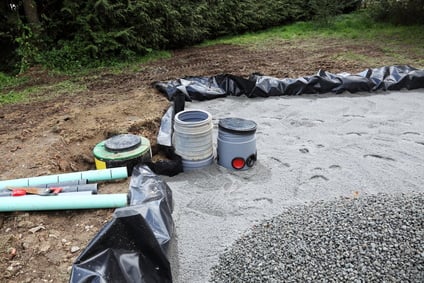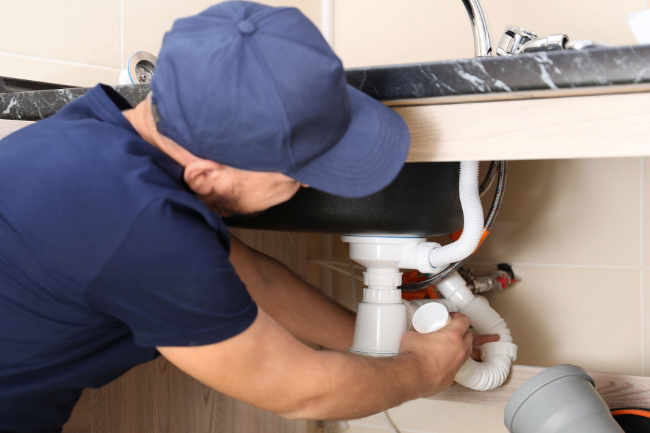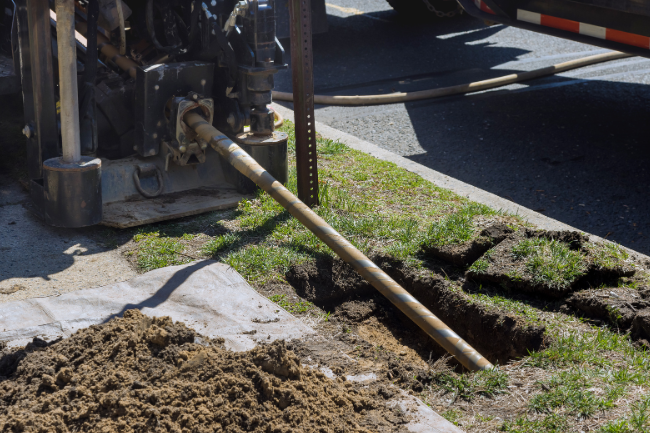How Lateral Lining Works
Posted by William Heinselman on
 Lateral lining is exactly what it sounds like—lining the lateral pipes that come off of the mainline. However, the nature of pipe lining is a complex process, and it might seem a bit confusing to the naked eye. However, when it’s done, it’s as strong as a standard pipe and has a 50-year lifetime—possibly longer than the pipes you currently have in your home or business.
Lateral lining is exactly what it sounds like—lining the lateral pipes that come off of the mainline. However, the nature of pipe lining is a complex process, and it might seem a bit confusing to the naked eye. However, when it’s done, it’s as strong as a standard pipe and has a 50-year lifetime—possibly longer than the pipes you currently have in your home or business.
What It Is
The liner itself is made of resin, which bonds firmly and securely to the existing pipe. Thanks to the fact that the entire thing is done within an existing pipe rather than requiring us to actually handle the pipe, we can do the entire procedure without digging a big trench through your yard or making giant holes in your floor. It makes life simpler for you and easier for us—trust us when we say we don’t want to be moving that stuff around just as much as you don’t want the hassle.
The Process
As to the process itself, it’s fairly simple. First, we inspect the pipes. The pipes must be free of debris or else the liner won’t adhere correctly. This can cause flow issues and a loss of structural integrity. This part is necessary, as we want your pipes to last as long as possible.
After we complete this task, we seal off the pipes and begin cleaning them out. Using a variety of methods to make sure that they’re clean (including Hydro-Jetting). This ensures a perfectly clean pipe that we can get a good seal on. This means better flow and a longer lifetime for your pipes.
After that occurs, we position the liner and all of the equipment to make sure that everything moves smoothly. This is important because of time. If we can’t get the resin into place quickly enough, it has the risk of going off. If this happens, we’re out a liner and you’ve still got a leaky lateral pipe.
We then turn the liner inside out, or “invert” the liner. This is done because it makes the pipe liner more stable and creates a stronger pipe—again, important because we need to ensure that your pipe is as solid and as strong as possible, and that it lasts for the full 50 years. Once the liner is inverted, we use either water or steam pressure to push it fully into place. This is how we maintain the trenchless aspect of the lining—we don’t need to dig anywhere
At this point comes the fun part—curing the pipe. We’ve inverted the pipe, pushed it into place, and now we run hot steam or water into the liner to begin the curing process. We slowly raise the temperature until the epoxy’s chemical reaction happens, at which point the temperature spikes. From this point forward, there’s only a little bit of time left until it’s done. Once the curing process has reached the midway point, we start lowering the temperature until it’s back to the surrounding temperature. At this point, we reinstate the line by cutting off the ends, preparing the pipe for water flow, and restart that flow. All done! We now have a sealed, ready-to-go pipe with no excavation or hassle.
If you think that this procedure might be for you, feel free to call us. We’re here to serve your needs and avoid the problems inherent in digging or excavating. We promise minimal mess and maximum service with as little disruption to your everyday life as we can possibly manage. We’re here to help you however you need—and as well as you deserve.
Topics: Trenchless Technology

![Repiping Your Sacramento Home [6 Steps]](https://www.expresssewer.com/hs-fs/hubfs/plumbing%20tools%20and%20blueprints.jpeg?width=550)




